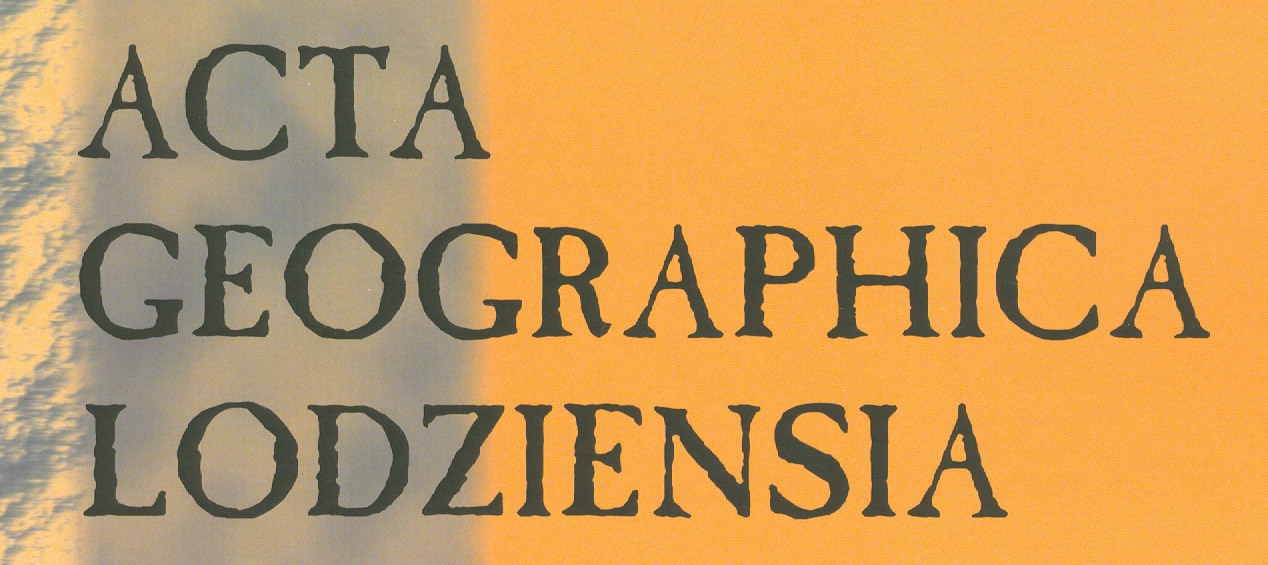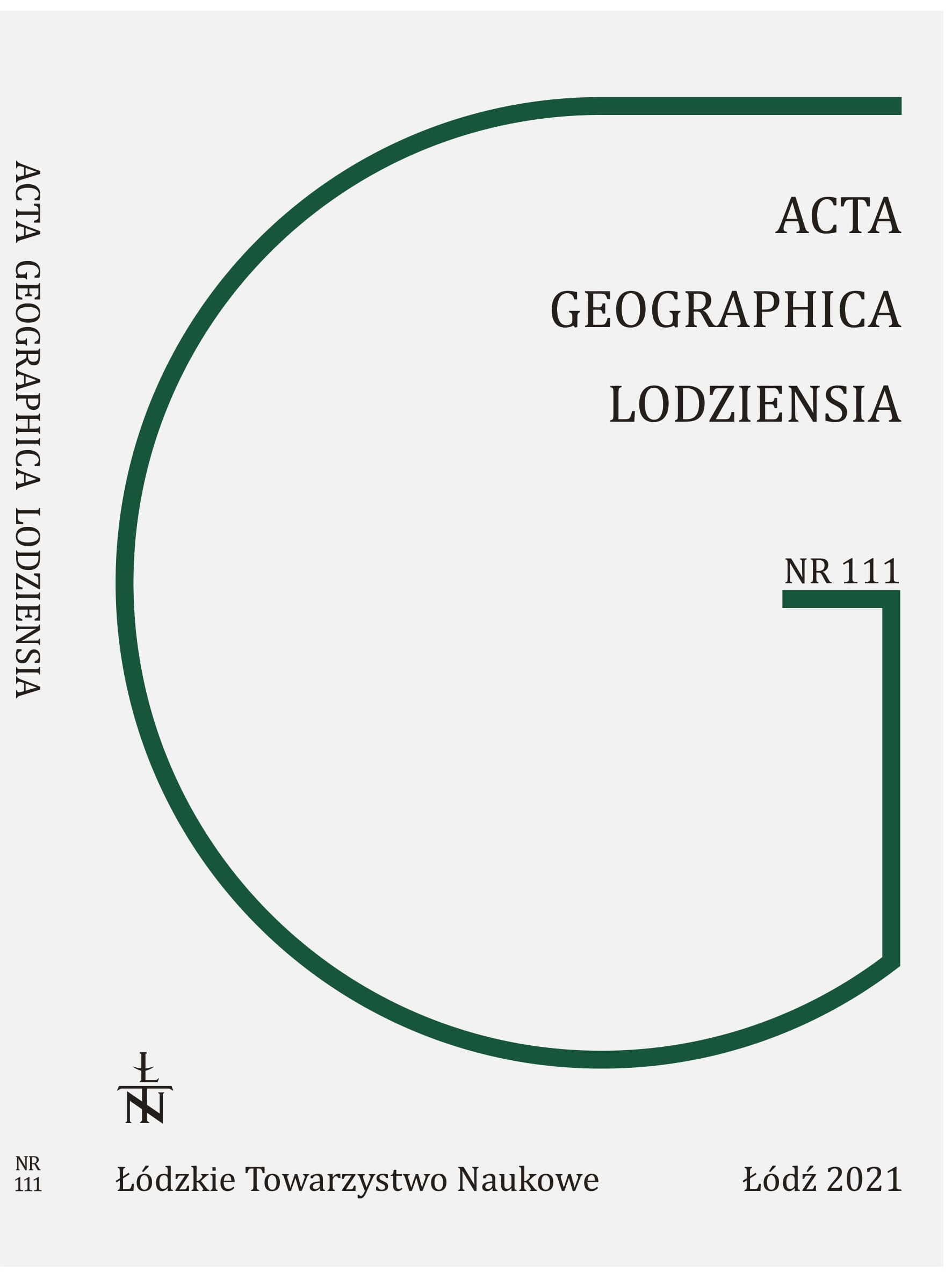The rising temperature trend and elongation of the warm period in summer in the Algerian south-west, 1951–2010
DOI:
https://doi.org/10.26485/AGL/2021/111/13Abstrakt
Several studies indicate that the hot season is lengthening at the expense of the intermediate seasons, and extreme events are becoming more intense and spread out over time. What is the situation in a climate described as very hot? This work aims to examine the evolution of minimum and maximum temperatures in the hot period from June to September during 1951–2010 in the Bechar region, which is classified among the hottest in the world and located in the south-west of Algeria. This study will also focus on the extending of the warm period (the period between the first and the last recording of an extremely hot day). The results showed an evolution of maximum and minimum temperatures, leading to an upward trend in the mid-1990s. There was an average increase of 1°C at the maximum and 0.9°C at the minimum. The warm period experienced a sig-nificant expansion attributed to both the earliest and the latest extremely hot day events.
Bibliografia
Allstadt A.J., Vavrus S.J., Heglund P.J., Pidgeon A.M., Thogmartin W.E., Radeloff V.C. 2015. Spring plant phenology and false springs in the conterminous US during the 21st century. Environmental Research Letters 10: 104008. https://doi.org/10.1088/1748-9326/10/10/104008.
Almazroui M., Saeed F., Saeed S., Nazrul Islam M., Ismail M., Klutse N.A.B., Siddiqui M.H. 2020. Projected Change in Temperature and Precipita-tion Over Africa from CMIP6. Earth Systems and Environment 4: 455-475.
Barbier J., Guichard F., Bouniol D., Couvreux F., Roehrig R. 2018. Detection of intraseasonal large-scale heat waves: Characteristics and historical trends during the Sahelian Spring. Journal of Climate 31(1): 61{80. 23, 31, 64, 66, 75, 76, 79, 80, 81, 84, 86, 88, 90, 162, 163.
Basagaña X., Sartini C., Barrera-Gómez J., Dadvand P., Cunillera J., Ostro B., Sunyer J., Medina-Ramón M. 2011. Heat waves and cause-specific mortality at all ages. Epidemiology 22: 765-772. https://doi.org/10.1097/EDE.0b013e31823031c5.
Batté L., Ardilouze C., Batté L., Ardilouze C., Déqué M. 2018. Forecasting West African heat waves at subseasonal and seasonal time scales. Monthly Weather Review 146(3): 889-907. https://doi.org/10.1175/MWR-D-17-0211.1.
Boudiaf B., Dabanli I., Boutaghane H., Şen Z. 2020. Temperature and Precipitation Risk Assessment Under Climate Change Effect in Northeast Algeria. Earth Systems and Environment 4: 1-14.
Christidis N., Stott P.A., Brown S., Karoly D.J., Caesar J. 2007. Human contribution to the lengthening of the growing season during 1950-99. Journal of Climate 20: 5441-5454.
https://doi.org/10.1175/2007JCLI1568.1.
Driouech F., ElRhaz K., Moufouma-Okia W., Arjdal K., Balhane S. 2020. Assessing Future Changes of Climate Extreme Events in the CORDEX-MENA Region Using Regional Climate Model ALADIN-Climate. Earth Systems and Environment 4 : 477-492.
Faci M., Matari A., Oubadi M., Boudjemline F., Farhi Y. 2016. Analyse des journées de forte chaleur à l’Ouest Algérien. JARA, Numéro spécial Canic-ule 2016: 21-27.
Faci M., Oubadi M., Matari A., Farhi Y. 2018. Heat waves in Algeria: A potential risk. International Journal of Innovative Technical and Applied Sciences 2: 013-021.
Fischer E.M., Schär C. 2009. Future changes in daily summer temperature variability: driving processes and role for temperature extremes. Cli-mate Dynamics 33(7-8): 917. https://doi.org/10.1007/s00382-008-0473-8.
Hoegh-Guldberg O., Jacob D., Taylor M. 2019. The human imperative of stabilizing global climate change at 1.5°C. Science 365, eaaw6974. https://doi.org/10.1126/science.aaw6974.
Karl T.R., Nicholls N., Ghazi A. 1999. CLIVAR/GCOS/WMO Workshop on Indices and Indicators for Climate Extremes Workshop Summary. In: T.R. Karl, N. Nicholls, A. Ghazi (eds) Weather and Climate Extremes. Springer, Dordrecht. https://doi.org/10.1007/978-94-015-9265-9_2.
Kendall M. 1975. Rank Correlation Methods, 4th ed. Charles Griffin, London.
Mann H.B. 1945. Nonparametric tests against trend. Econometrica 1(3): 245-259. https://doi.org/10.2307/1907187.
Mazdiyasni O., AghaKouchak A., Davis S.J., Madadgar S., Mehran A., Ragno E., Sadegh M., Sengupta A., Ghosh S., Dhanya C. 2017. Increasing probability of mortality during Indian heatwaves. Science advances 3: e1700066. https://doi.org/10.1126/sciadv.1700066.
Meddi M., Meddi H., Ketrouci K., Matari A. 2005. Tendance du régime pluviométrique et sècheresse dans le nordouest algérien. In: IVe collo-que du département de géographie. Eau et Espace ressources, enjeux et aménagements.
NMO 2004. National Office of Meteorology. Projection climatique en Algérie à l'horizon 2020.
NMO 2010. National Office of Meteorology. Annual summary of the weather in Algeria. Algiers.
Oueslati B., Pohl B., Moron V., Rome S., Janicot S. 2017. Characterization of heat waves in the Sahel and associated physical mechanisms. Journal of Climate 30: 3095-3115.
https://doi.org/10.1175/JCLI-D-16-0432.1.
Oubadi M., Hamou A., Faci M., Farhi Y. 2020. Impacts des canicules sur les contraintes environnemen-tales dans la région de Béchar. Journal Algérien des Régions Arides 14: 80-101.
Park B.J., Kim Y.H., Min S.K., Lim E.P. 2018. Anthropogenic and natural contributions to the lengthening of the summer season in the northern hemisphere. Journal of Climate 31(17): 6803-6819.
https://doi.org/10.1175/JCLI-D-17-0643.1.
Paturel J.E., Servat E. 1996. Procédure d’identification de ruptures dans les séries hydrologiques; modi-fication du régime pluviométrique en Afrique de l’Ouest non sahélienne. IAHS Publication 238: 99-110.
Perkins-Kirkpatrick S.E., Lewis S.C. 2020. Increasing trends in regional heatwaves. Nature Communications 11: 1-8. https://doi.org/10.1038/s41467-020-16970-7.
Peña-Ortiz C., Barriopedro D., Garcia-Herrera R. 2015. Multidecadal variability of the summer length in Europe. Journal of Climate 28(13): 5375-5388. https://doi.org/10.1175/JCLI-D-14-00429.1.
Raei E., MNikoo M.R., AghaKouchak A., Mazdiyasni O., Sadegh M. 2018. GHWR, a multimethod global heatwave, and warmspell record and toolbox. Scientific Data 5: 180206. https://doi.org/10.1038/sdata.2018.206.
Rohde R., Muller R.A., Jacobsen R., Muller E., Perl-mutter S., Rosenfeld A., Wickham C. 2013. A New Estimate of the Average Earth Surface Land Temperature Spanning 1753 to 2011. Geoinfor Geostat: An Overview 1: 1. of, 7, 2. https://doi.org/10.4172/23274581.1000103.
Russo S., Marchese A.F., Sillmann J., Immé G. 2016. When will unusual heat waves become normal in a warming Africa? Environmental Research Letters 11,5: 054016. https://doi.org/10.1088/1748-9326/11/5/054016.
Schwartz M.D., Ahas R., Aasa A. 2006. Onset of spring starting earlier across the Northern Hemisphere. Global Change Biology 12(2): 343-351. https://doi.org/10.1111/j.1365-2486.2005.01097.x.
Santer B.D., Po-Chedley S., Zelinka M.D., Cvijanovic I., Bonfils C., Durack P.J., Zou C.Z. 2018. Human influence on the seasonal cycle of tropo-spheric temperature. Science 361: eaas8806. https://doi.org/10.1126/science.aas8806.
Sheridan S.C. Lee C.C. 2018. Temporal trends in absolute and relative extreme temperature events across North America. Journal of Geophysical Research: Atmospheres 123: 11889-11898. https://doi.org/10.1029/2018JD029150.
Sneyers R. 1975. Sur L'analyse Statistique des Séries Observations: Note Technique N. 143. Secrétariat de l'Organisations Météorologique Mondiale.
Some'e B.S., Ezani A., Tabari H. 2012. Spatiotemporal trends and change point of precipitation in Iran. Atmospheric research 113: 1-12. https://doi.org/10.1016/j.atmosres.2012.04.016.
Wang J., Guan Y., Wu L., Guan X., Cai W., Huang J., ..., Zhang B. 2021. Changing lengths of the Four Seasons by global warming. Geophysical Research Letters 48(6): e2020GL091753. https://doi.org/10.1029/2020GL091753.
Pobrania
Opublikowane
Jak cytować
Numer
Dział
Licencja
Prawa autorskie (c) 2021 Łódzkie Towarzystwo Naukowe

Utwór dostępny jest na licencji Creative Commons Uznanie autorstwa 4.0 Międzynarodowe.



